Call our helpline
0300 180 0028Short guide:
- Click the Apple icon
 in the top left corner of the screen and select System Preferences.
in the top left corner of the screen and select System Preferences. - Click Accessibility.
- In the sidebar, click Pointer Control, then select the Alternative Control Methods tab on the right.
- Tick the checkbox for Enable Mouse Keys.
- Select the Options button to change the settings for Mouse Keys.
Before and after
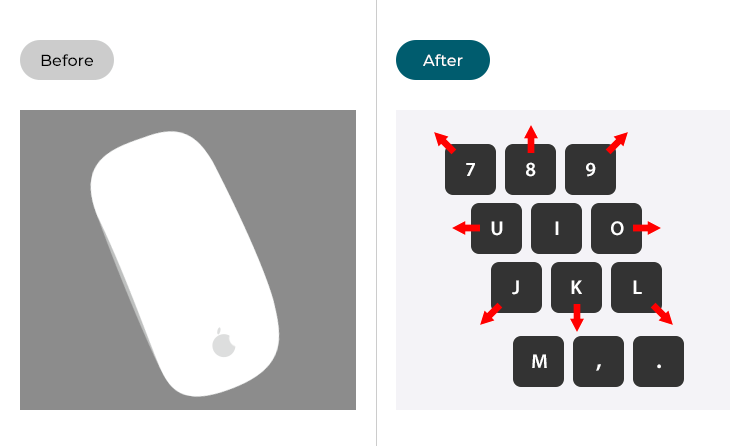
This section gives you step by step instructions on how to control the mouse pointer using the keyboard in macOS 12 Monterey, with pictures of the screens to help.
Open System Preferences
1. Click the Apple icon ![]() in the top left corner of the screen and choose System Preferences from the menu.
in the top left corner of the screen and choose System Preferences from the menu.
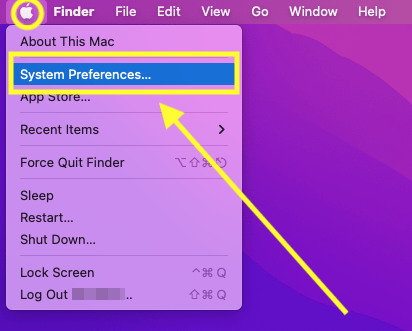
Open the Accessibility settings
2. In the System Preferences window, click Accessibility.
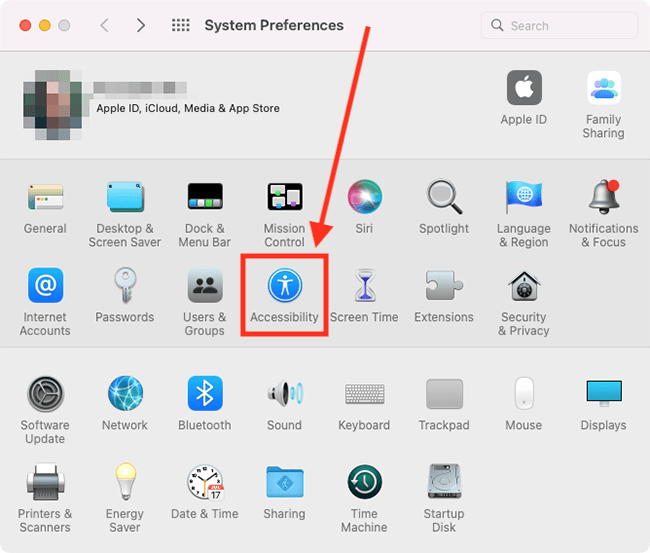
Find the Pointer Control settings
3. In the sidebar, scroll down and click Pointer Control, then select the Alternative Control Methods tab on the right.
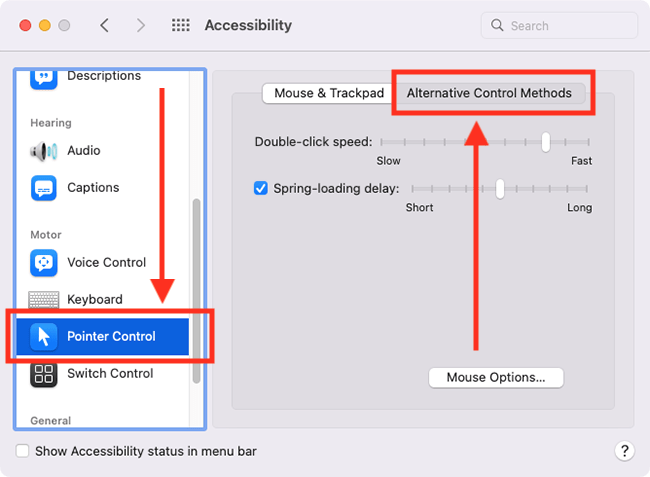
Enable Mouse Keys
4. Tick the checkbox for Enable Mouse Keys.
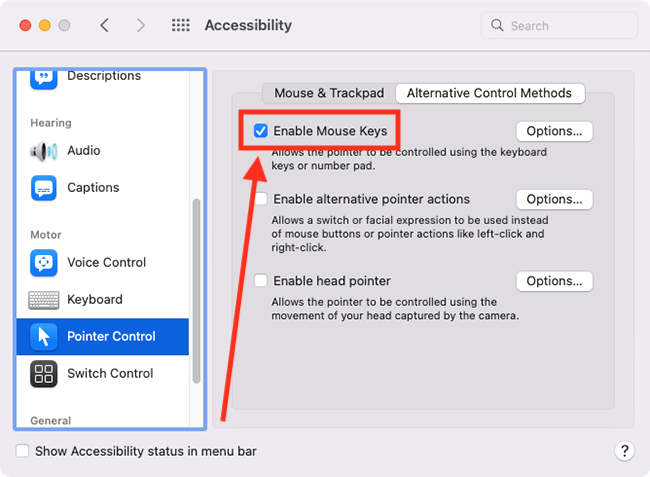
Customise Mouse Keys
5. To customise Mouse Keys, click the Options button.
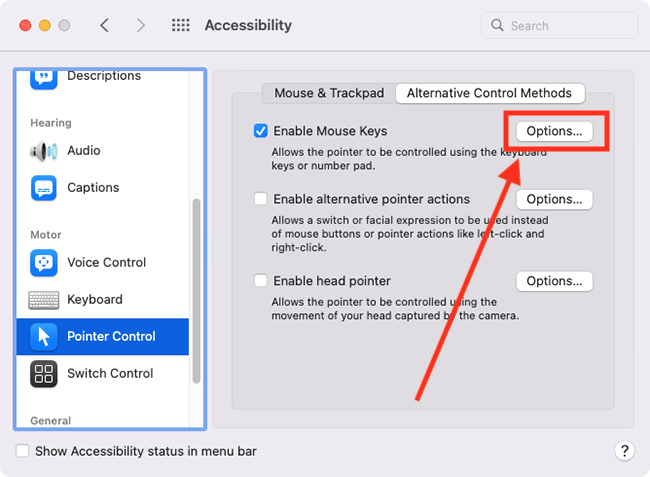
Turn Mouse Keys on and off from the keyboard
6. If you want to turn Mouse Keys on and off from the keyboard, tick the box for Press the Option key five times to toggle Mouse Keys.
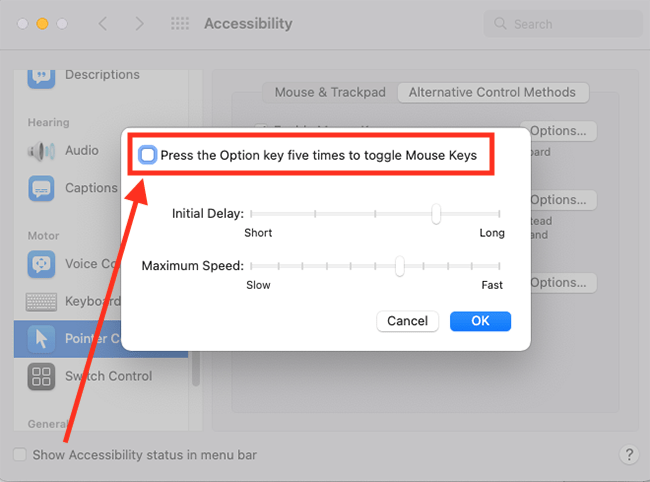
Change the delay before a key starts moving the pointer
7. Adjust the slider for Initial Delay to change the amount of time between pressing a key and the cursor moving.
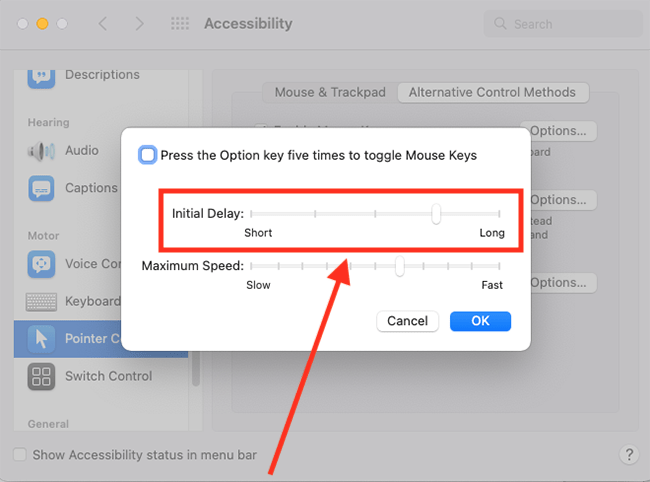
Change how fast the pointer moves
8. Adjust the slider for Maximum Speed to change how fast the pointer moves across the screen.
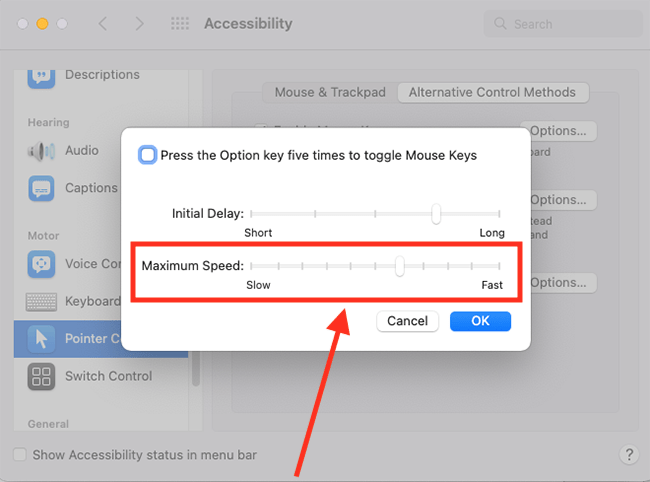
Save your Mouse Keys settings
9. Click OK to save your settings.
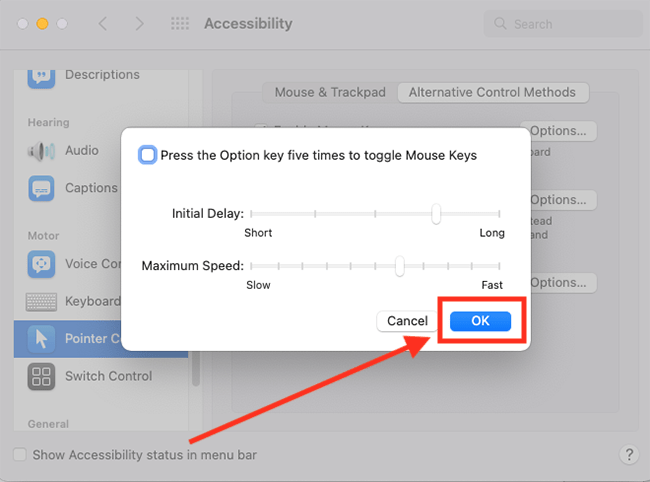
Add alternative pointer actions
When using Mouse Keys, you can perform a left-click by pressing I on a keyboard or 5 on a numeric keypad. You can set up alternative keys to perform a left-click, and you can also set up keys to perform right-click, double-click, and drag and drop actions. To do so:
10. Tick the checkbox for Enable Alternative Pointer Actions. By default, the keys assigned to alternative pointer actions are:
- Left-click: F11
- Right-click: F12
- Double-click: unassigned
- Drag and Drop: unassigned
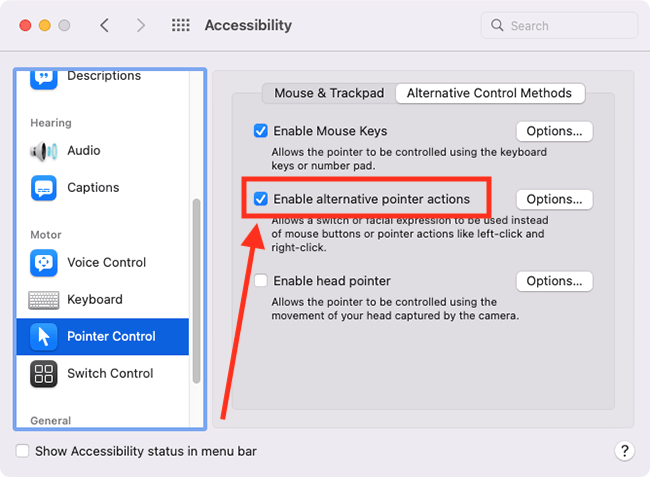
Customise alternative pointer actions
11. To change the keys assigned to alternative pointer actions, click the Options button.
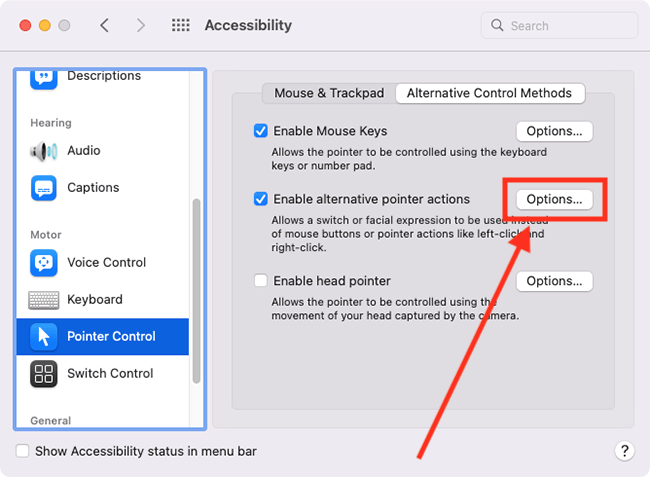
Assign keys to Double-click and Drag and Drop
12. To assign a key to Double-click or Drag and Drop, select it in the list, then click the options button ![]() . Choose Physical Switch, then press the key you wish to use. Click Done to save your changes.
. Choose Physical Switch, then press the key you wish to use. Click Done to save your changes.
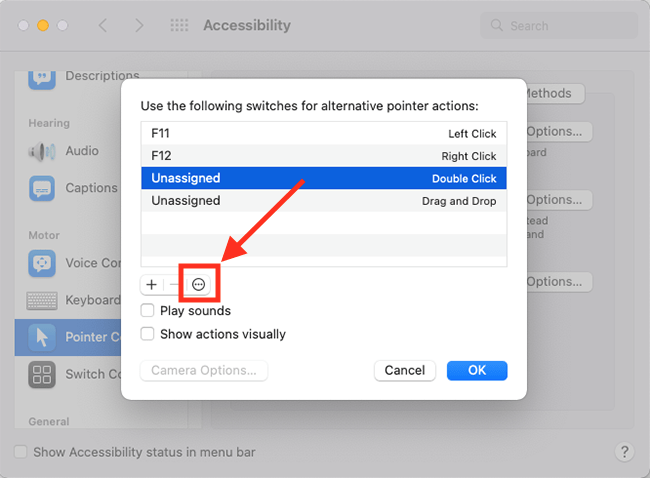
Change the key associated with an action
13. To change the key associated with an action, select the item, then click the options button ![]() .
.
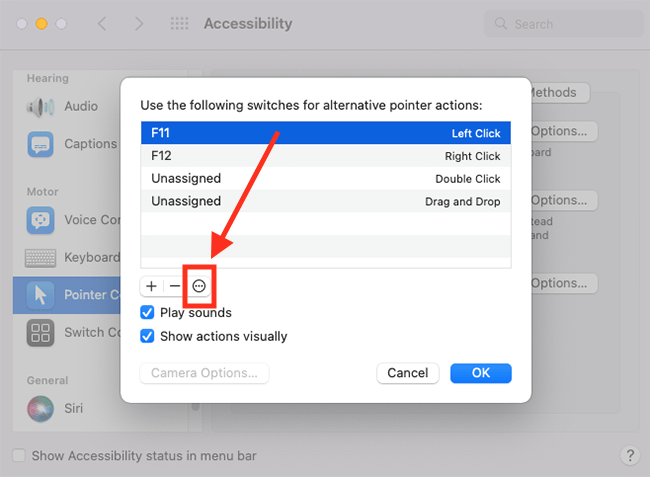
Click Reassign, then press the key you wish to use. Click Done to save your changes.
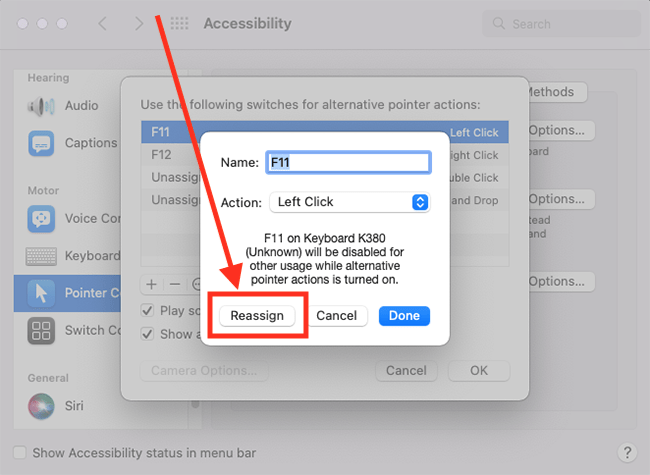
Add a new key to perform an action
14. To add a new item, click the + (plus) button. Choose Physical Switch, then press the key you wish to use.
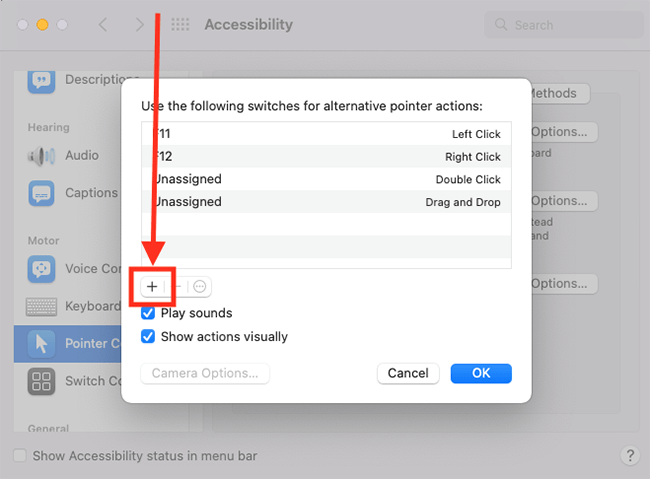
15. Next, choose the action you want this key to perform, then click Done.
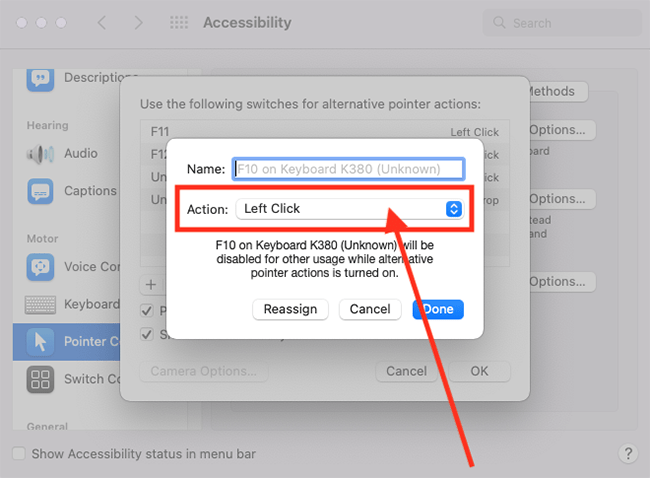
Hear a sound when a key is pressed
16. If you’d like to hear a sound when you press one of these keys, tick the checkbox for Play sounds.
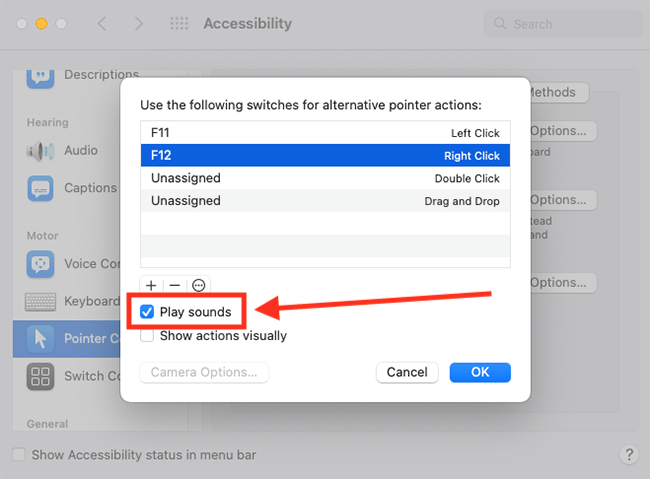
Receive visual feedback when a key is pressed
17. If you’d like visual feedback when you press one of these keys, tick the checkbox for Show actions visually. Once enabled, you will see a circular halo around the pointer when you press the key.
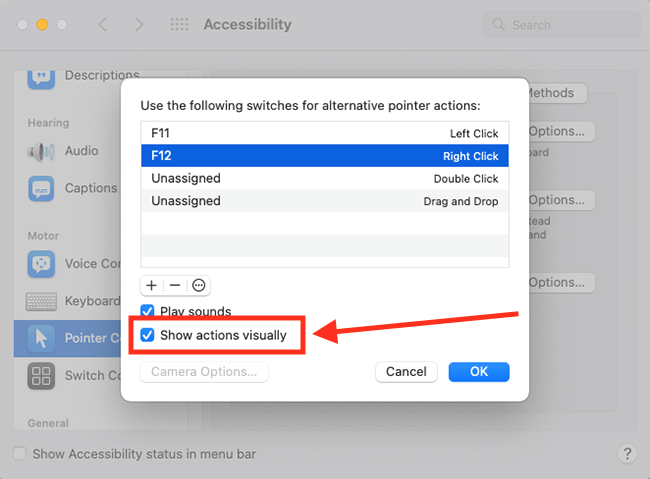
Save your alternative pointer action settings
18. Click OK to save your changes.
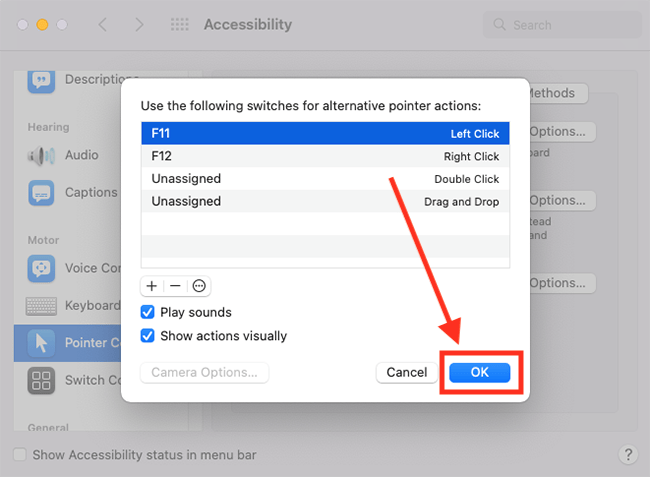
Close System Preferences
19. When you are happy with your settings, close System Preferences by clicking the Close button (red circle) in the top-left corner of the window or using the Cmd + W keyboard shortcut.
Using Mouse Keys
20. When Mouse Keys is on, you can move the mouse pointer by holding down the following keys on a keyboard and on a numeric keypad (if you have one).
To move the mouse pointer:
Using the keyboard: 7, 8, 9, U, O, J, K, L
Using the numeric keypad: 7, 8, 9, 4, 6, 1, 2, 3
To perform a left click:
Using the keyboard: I
Using the numeric keypad: 5
Press and hold the mouse button:
Using the keyboard: M
Using the numeric keypad: 0 (zero)
To release the mouse button:
Using the keyboard: . (full stop / period)
Using the numeric keypad: . (decimal point)
To perform alternative pointer actions (see steps 9-13, above, to see how to assign different keys to perform these actions):
Left click: F11 or user assigned
Right click: F12 or user assigned
Double click: user assigned
Drag and Drop: user assigned
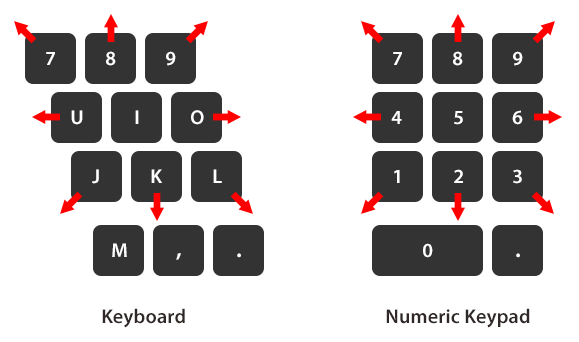
Note: If this does not work it could be because your computer settings are managed by someone else (an IT department or administrator for example). If so, you will need to contact them to access these settings or for help.